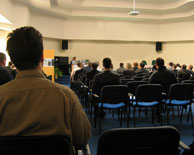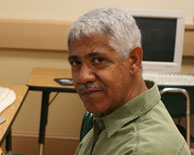The Origins of World War I
Overview
Over a century since the start of World War I, the complexity of its origins and broad-ranging outcomes still fascinate. Join Active Minds for a look at the causes of “the Great War.” Our focus will be on understanding how the stage was set for war by a variety of forces, including military alliances, imperialism, nationalism, and failed diplomacy. We will trace the seeds of conflict and examine how they played out, ultimately erupting into a war that involved most of the world and changed the face of history.
Key Lecture Points
- The roots of the first World War are a complex interweaving of a few basic preconditions. First, and perhaps foremost, the emergence of a unified Germany unbalanced the delicate peace among empires that had been established for 100 years. Thereafter, Germany and other major powers entered into what historians now call the European Alliance System that joined powerful industrial nations int a complex web of defensive pacts. The war was also the result of the rise of nationalism in Europe and its manifestation in global colonial expansion and an arms race, particularly between Britain and Germany.
- On June 28, 1914, Archduke Franz Ferdinand of Austria and his wife were assassinated by a Bosnian Serb nationalist in Sarajevo, Bosnia. An escalation of threats and mobilizations based on the tangle of European alliances set off a chain of events that resulted in the outbreak of World War I in August 1914, pitting Germany, Austria-Hungary and the Ottoman Empire (Central Powers) against Great Britain, France, Russia, Italy, Japan, and in 1917, America (the Allied Powers). In 1917, after the tumultuous Bolshevik Revolution, Russia withdrew from the fight and negotiated a separate peace with Germany.
- By September 1914, neither side could force the other to move, so both sides began to build trenches, starting a bloody war of attrition that lasted for four years with little ground won or lost. More than 8.5 million died and another 21 million were wounded in this “war to end all wars.”
- The Versailles Treaty ending the war was signed in 1919. It determined post-war borders from Europe to the Middle East, established the League of Nations and punished Germany for its aggression with reparations and loss of territory. The instability caused in Germany by WWI and the harsh treaty provisions created the conditions for the rise of Hitler’s Nazi Germany and the devastation of the Second World War.
Discussion Questions
- Over a century after the beginning of WWI, what lessons can be learned that could prevent comparable conflicts?
- Did you grow up knowing anyone who had been or who had relatives in WWI? What stories did they tell?
- Have you ever traveled to the battlefields of WWI? What were your impressions?
More to Explore
- More info on WWI Click here
- Essays and photos Click here
- Videos Click here
Books for Further Reading
- Tuchman, Barbara W. The Guns of August: The Pulitzer Prize-Winning Classic About the Outbreak of World War I. Presidio Press, 2004. Tuchman recounts the first month of WWI—30 days that determined the course of the conflict, the century and our world today.
- Mayhew, Emily, E. R. Mayhew. Wounded: A New History of the Western Front in World War I. Oxford University Press (UK), 2013. 275 pages. The number of wounded during WWI was staggering—over 21 million. The injuries the medical field staff saw were shocking and unlike any they had ever seen before—foot rot, poison gas, shell shock and traumatic amputations from shell explosions. This medical and military history tells how the field staff learned to deal with the wounds created by the new weapons introduced during WWI.
- Neiberg, Michael S. Dance of the Furies: Europe and the Outbreak of World War I. Belnap Press, 2013. 292 pages. Using letters, diaries and memoirs, Neiberg portrays the thoughts of ordinary Europeans as they watched a minor diplomatic crisis erupt into a continental bloodbath.






Copyright © 2004-2025 Active Minds®. All rights reserved.
